Trending
Opinion: How will Project 2025 impact game developers?
The Heritage Foundation's manifesto for the possible next administration could do great harm to many, including large portions of the game development community.

Featured Blog | This community-written post highlights the best of what the game industry has to offer. Read more like it on the Game Developer Blogs or learn how to Submit Your Own Blog Post
Is a small game a better fundraising tool than a crowdfunding campaign? This postmortem takes a look at the six-month development of a very short first-person adventure game.

Leaving Lyndow is a short (about 45 minutes) first-person adventure game. The game is a prequel to our upcoming open-world game Eastshade. While set in the same setting as the larger upcoming title, it features distinct mechanics and story. We announced Leaving Lyndow on January 11th, 2017, less than a month prior to its release (official trailer). To avoid confusion with Eastshade, currently still in development, we released a short video explaining the reasoning and history behind the small titles' odd format and development. As outlined in the video, our reasons for creating such an odd and small game were three-fold:
As an inexperienced studio, we wanted experience shipping a title before shipping our much larger and more costly-to-develop title Eastshade.
We wanted some supplemental funding, and suspected a small game would be equivalent work and more effective at fundraising than a crowdfunding campaign. More on that later.
We like short format games, and were deeply excited to make this one.
So the title seemed like a good idea from both a business perspective and an artistic one. The idea for Leaving Lyndow came to me after playing a short experimental game called Home is Where One Starts by David Whele. I enjoyed the 30 minute vignette of a title, and found its brevity refreshing compared to the much larger time commitment of other games. As a consumer, I feel there is a lack of games in this format, and I found myself inspired to make my own. Apparently many in the general gaming public are not as enchanted by short games as I am. More on that later.
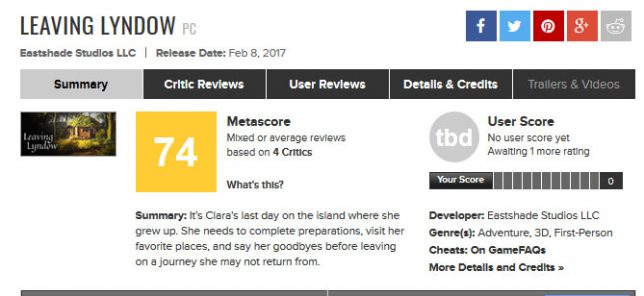
Leaving Lyndow released to mostly positive reviews, scoring a 74 on metacritic (sadly one point below a green 75), and 84% positive steam reviews at the moment. Between myself full-time and a few part-time contractors, development took over six months, which was about double the time we planned for it. I'd like to reflect on the debacle as a whole. There are two perspectives in this postmortem: Reflecting on the development process, and reflecting on the business strategy and launch. Since I'm a near one-person show, these undertakings are blurred together for me, so I am going to mash them both into this one article.
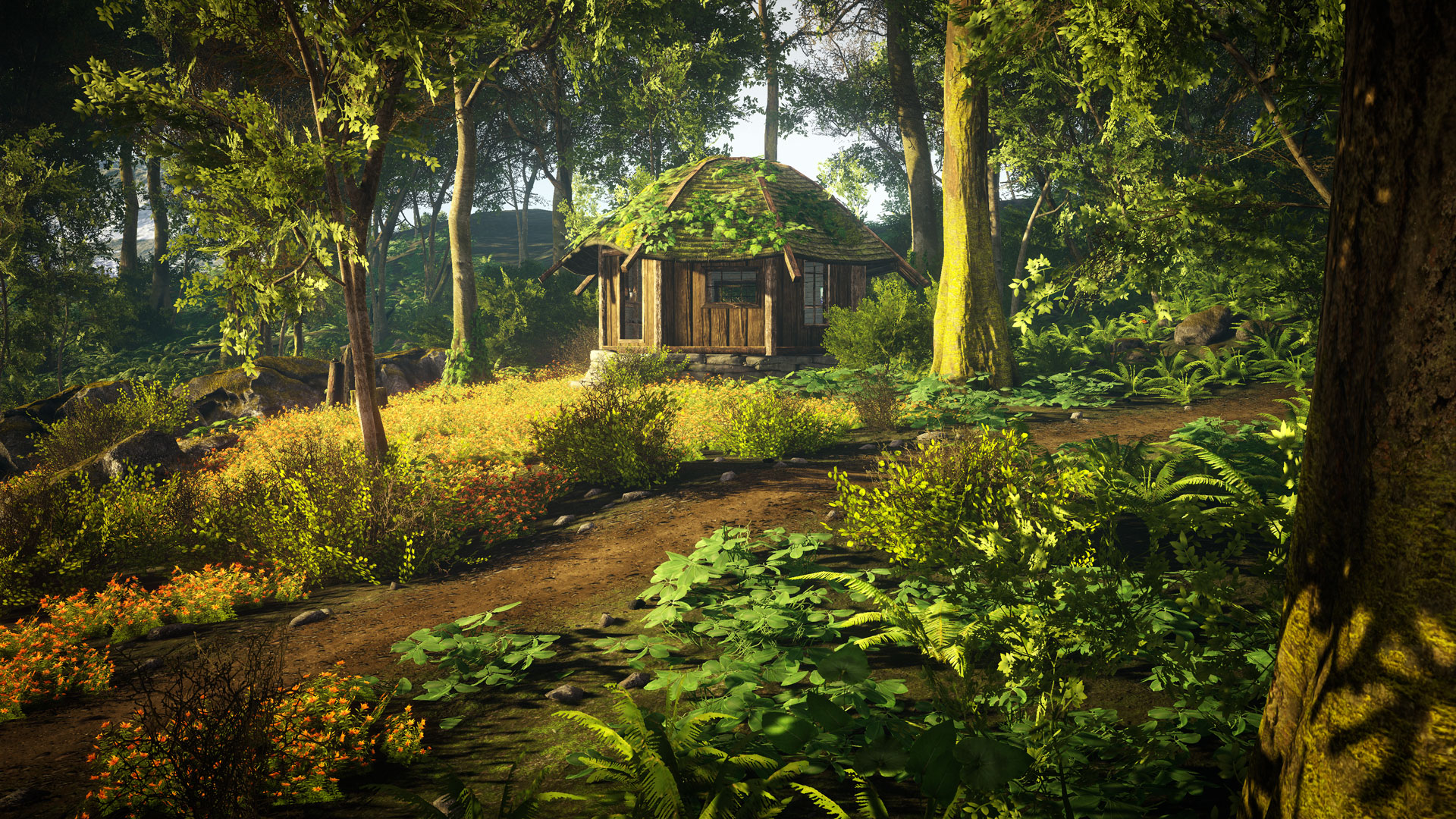
First and foremost, did this thing work? Did it better prepare us for Eastshade's launch? Was it an effective fundraiser? Additionally, was it effective at building brand?
At this point I'm entirely certain that had we gone on to release Eastshade as our first title instead of this small thing, it would have been a major disaster. Between localization, learning the Steam back end, finalizing all the pieces, running a closed beta, I can only imagine how much more difficult doing all that for the first time would have been with a game ten times as large and complicated. For example, shortly after launch I accidentally removed the soundtrack from the Steam depot, causing everyone's soundtrack to vanish from their computer as Steam automatically updated the removed files. Even worse, after some reports, I discovered there was a bug in the localization system, where somehow it had generated a few duplicate string ids scattered throughout the games' text. This resulted in some dialogues feeding you the wrong line. The only way to fix it was to go searching through the localization tables for duplicate ids, give the duplicates new ones manually, and hunt down which string was supposed to be in the corresponding text field. This was especially difficult when I don't speak the language of the localization I'm fixing! Now what if that had happened with a localization table ten times as large? I've since pinpointed exactly how those texts got jumbled and now all that's sorted for Eastshade. I'm glad I've learned the ropes of all this before launching our 4+ year development title.
As for fundraising, for what is now our first three months of sales, our revenue is about $10,000 USD across both itch.io and steam. That more than recoups what I paid out to contractors, and now every unit sold is slowly paying me back for my own time spent. I expect this figure to continue to rise throughout the year, and we are currently working to bring Leaving Lyndow to consoles. So I don't expect it to expand Eastshade's production budget substantially, but over time, I think it will eventually pay for itself handily.
I believe Leaving Lyndow has been an effective marketing tool for Eastshade. Press are far more likely to cover a release than they are to cover a crowdfunding campaign, so the visibility we've gained form this release has been substantial. Moreover, thousands of people have gotten a taste for the Eastshade world now, and as far as I can tell they are hungry for more.
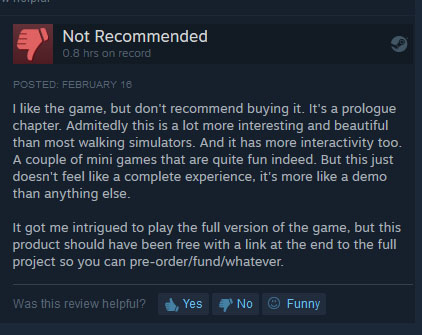
This review is telling, even despite its misinformation (Eastshade is not the full version of Leaving Lyndow. They are two mechanically distinct games). They felt the game was too short, gave it a thumbs down, but despite this they are still interested in our next game! Hooray!
As the Leaving Lyndow project was first and foremost an exercise in releasing a game, I knew it would be an excellent opportunity to try working with a PR company. This project would be small enough that if it wasn't a good fit, the damage wouldn't be too great. When choosing a PR firm, I think a size match is important. Granted, its not like I've done a lot of business with tons of PR firms, so know that this is a bit of arm chair speculation on my part. But it seems to me that if you're small, and you get a medium or large firm, your launch campaign likely won't matter much to them. Not because they're evil, but its just the dynamics of human psychology. You can't possibly occupy much space in the firms' organizational focus. Conversely, if you're a big studio, you wouldn't want to risk your launch campaign on a small firm that doesn't have the bandwidth you need for your larger production.
I couldn't have asked for a better fit than Player Two. @CharleneLebrune knows the games media landscape well and is current in the protocols and practices of games PR. With her help we managed as widespread coverage as we could have hoped for, being covered by the likes of Kotaku, Polygon, and PCGamer and many many more. I can't tell you how relieving it was to know that the publicity front was being handled in those most stressful months leading up to release. I think it'd be completely insane to attempt doing all the press liaison, review code distribution, and inquiry responding on top of normal development crunch in the final month. Moreover, PR is its own skill, and to do it effectively takes study and practice like any discipline. If you're indie like me you're likely juggling enough disciplines as it is, and this discipline is easily outsourced. They don't need to be trained in your tools or familiarized with your game architecture to be effective and save you tons of time, so I think it makes a lot of sense for an indie studio to contract a publicist.
As I've been working on a large game for the last 3.5 years, sometimes my brain tries to scheme a way out. "What if I just made a smaller game instead of this one!" And for a minute I fool myself that if I could only start fresh with something "smaller" things would be easy. But, alas, this is usually not the case. Every game seems smaller than the one you're working on. Only when you delve into the depths of production do the complications in your designs show themselves, and once more you are reminded that the pan is hot. But this time the smaller idea I had seemed so assuredly small, and my inspiration burned so hot that I couldn't help but succumb. Cautious as I am of the wicked allure of a smaller game, I told myself I had one night to produce a prototype. If I didn't have a skeleton prototype that could be played start to finish by morning, I'd end it right away. By 6 am I'd accomplished just that. And rather handily! I knew it could be done. And once I'd discussed it with my co-designer girlfriend, we verified the sanity of the idea from a business perspective. Even with all this sanity checking, my scheduling was off by double.

It was tempting to create a new Unity project directory and code Leaving Lyndow from scratch, but I decided to branch the Eastshade build and commandeer the game logic. Its easy to forget how time consuming simple things like pause menus can be, and it was nice to have scaffolding to work from. The added benefit to this was that I was able to polish things like the options menu, and easily take those improvement back into Eastshade. I'm not an accomplished programmer, but I already find myself having those all-too-programmer temptations to create things anew, ensuring elegance and bloat-freeness. While a noble sentiment, I have found this persistent desire to remake and refactor to be dangerous. I have no doubt it is the surefire way to become a better programmer, but I also have no doubt it is the surefire way to never finish games. Sometimes one has to decide: Do you want to become a better programmer and be totally satisfied with your architecture? Or do you want to finish the darn game? The very essence of Leaving Lyndow's development was the later.
During the development of Leaving Lyndow, I spent a great deal of time on optimization. In fact, There was one shader I spent almost two weeks optimizing alone! It was one of the most prevalent shaders in the game (the vegetation shader), and ended up increasing frame rate by about 30% across the board. I'm very glad I did this. I think a smooth frame rate is something players appreciate a lot, and I'm convinced it tremendously improves the perceived production value of your game. Often the first criticism of a bad game is its poor performance. All this groundwork in optimization will carry through to our future games.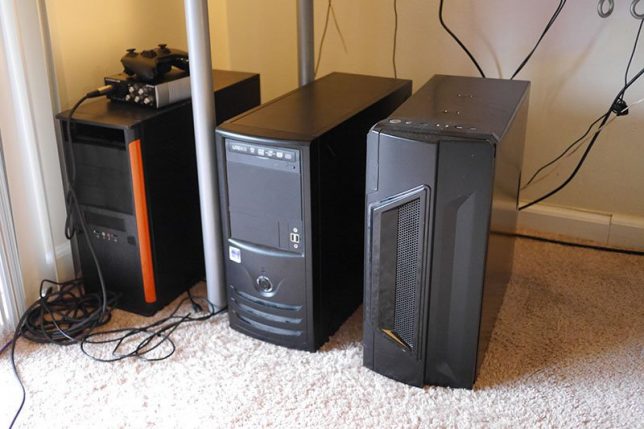
From a developers perspective, I feel game length is a bit of a paradox. The harder you work to hone the experience, cutting the weak parts, streamlining the tedious actions, the shorter the game becomes, yet the better what's left of it is, and consequently the greater the loss is felt for lack of content.
Leaving Lyndow, for its shortness, is fairly dense. Much to the sorrow of many players, your avatar cannot run. Yet despite your movement being slow, the game's pace doesn't feel slow, because within under an hour, you experience six entirely distinct environments, and five unique music tracks. Compare this to other adventure games, where you might see the same number of environments and hear the same number of songs but over the span of six hours. I believe its this density of audio visual content that makes each moment you spend in Leaving Lyndow exciting, but its exactly this density that collapsed the game into such a short play-time. "I liked it! Why didn't you just make more?" the gamer says. "There was more," responds the developer "but I trimmed it down so that you would like it."
It is said that "too short" is the best criticism you can have, but in Leaving Lyndow's case, given the ubiquity of the criticism, I think it may indeed have actually been too short. I think there's a reason people don't make short games. I don't know if the market's bias against short titles is self-perpetuating, and we are working against arbitrary length standards, or if we're rather working against ones inherent in the medium, but one has to deal with the perception no matter the cause. If I could do it all over, I'd have made the game longer. In addition to adding more content, I would have worked a bit to maximize length with the content we had. I think the content we had could have sustained interest for longer than I'd thought. Moreover, there is a certain startup cost to create a new design, and once you get things working, additional content is a bit cheaper. We could have increased the price to compensate, given that most agreed the price was fair for the time they got. They just wanted more time.
Given the low price point of $3.99 USD I decided to release without a launch discount. I thought discounting such a low price was unnecessary. After all, 20% off would have only been 80 cents less! In hindsight, I have a feeling this was a mistake. I can never know for sure how much damage it did, but I suspect we would have more than sold enough extra copies to compensate, and more importantly, we would have had a better chance of holding in the "popular new releases" list.
This is all speculation, since Valve's discovery algorithms are a guarded secret, but myself and a few of my fellow developers feel that staying in the popular new releases list is very important not just for launch performance, but for the long term revenue of your game. Leaving Lyndow seemed to be just on the threshold of selling enough, because we kept popping in and out of that list for the first two days of launch. Despite the fact that the list primarily brings traffic during the first week, to this day (3 months after launch), our placement in that list is responsible for a whopping 2.3 million impressions, and 20% of our total page visits. I can imagine if we held firmly in that list instead of popping in and out, we may have sold twice as many copies at launch, potentially improving our standing in Steam's algorithms forevermore. Given the average steam user's trepidation to ever purchase anything full price, I think that little green discount swatch in the corner of our thumbnail would have improved our conversion just enough to make all the difference. I need to say it again, this is all my personal speculation, so take it with a pinch of salt, but you can bet your boots our next release Eastshade will have a launch discount.
I don't think this was so much a mistake we could have corrected, but rather an inevitable consequence of doing something as bizarre as we did. Leaving Lyndow is a short game that looks similar to Eastshade at first glance, is set in the same world, is only 45 minutes long, yet its totally self-enclosed, is not a demo, costs money, and has nothing to do with Eastshade mechanically. From a branding perspective, does it get more confusing than that? We knew this would confuse people, so we went through great lengths to make things clear in every press release. That's also why we went through the effort of making that talking head explanation. I clarified often on twitter as well. Yet many still mistook Leaving Lyndow for a demo. Fortunately most reviewers conceded it was nonetheless decent value given its polished content and low price point. But there were a few who had it in their head that short things are demos, and demos are supposed to be free. This was mildly frustrating, but all in all the vast majority of people didn't complain, enjoyed their experience, and were excited about our next title. So I think the confusion was a small price to pay, but I feel this point deserved mentioning for those of you who might be considering unconventional business plans.
The most devastating mistake I made was the design of the character faces. I had in mind to do them part monkey, part human, and devised the cultural quirk that they cover their mouths (largely to avoid lip syncing the jibberish greeting lines each character dispenses when you speak to them). I have no problem with them looking hideous. I think we as a species would likely be better off if we minded looks less. My issue with them is that for all their hideousness, the design isn't creative, clever, or even iconic. Its bland and hideous at the same time. We likely would have done better to go full anthropomorphic, and put any other animal head on (an animal that isn't already so darn close to human anatomy).
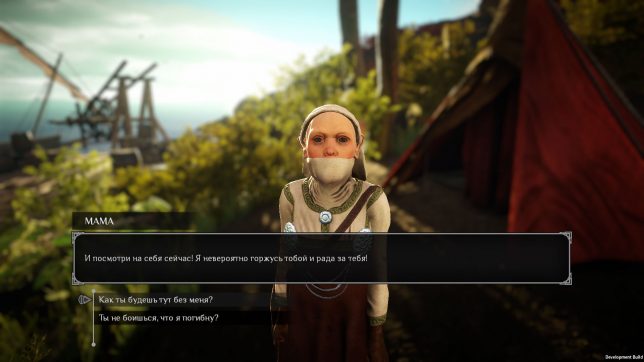
To make matters worse, the jaw line and mouth is an extremely important feature in facial recognition, and it became even harder to create distinct appearances for the characters. I assure you the challenge of face design without a mouth is more expensive and arduous than lip sync. This shortcut turned out to be not a shortcut at all. Combine this with the fact that almost everyone is bald, and you have a recipe for bland characters that all look the same. I'm working with an amazingly talented character modeller, but I handled the face designs myself, and character design is something I'm rather bad at. I should have found someone else to do it.
I've worked myself into a bit of a bind here with our island of ugly characters. I have decided I'm going to rip the band aid off right now, and we'll be adding new character types for Eastshade. The monkey folk may remain, but they will only be a percentage of the population, so at least we have some variety and interest. It might be a bit strange lore-wise for all these new races to arrive suddenly for Eastshade, but I hope it can be forgiven for the sake of future world-building.
While we will never again make a game this short, we accomplished many goals with the Leaving Lyndow project. Most importantly, it vastly reduced the chances of our next big release becoming a spectacular train wreck. Some of the development work we did will carry through, and our code is somewhat more battle-tested now. Our brand got some attention, and thousands now await what we do next. I learned how to use the Steam back end, and got a little better at talking about our games. We're well on our way to breaking even on the production costs, including my own time, and I'm hopeful the long tail and console release will help fund future development. Hopefully another thing we learn from this is how to port and certify a game for console, which still lies before us. One last thing I personally got out of Leaving Lyndow is the confidence to know this indie thing can work. All these years I've felt very uneasy about the future. I still feel uneasy, as it comes with the territory when you are running your own business, but not as much as I felt before, and its nice to know that when we ship a game, money does indeed come into the bank account.
Released February 8th, 2017
45 minute play time
$3.99 list price
1 developer full-time, 4 contractors part-time
six month development time
Revenue for first 3 months on PC: $10,000 USD
Game engine: Unity
Thanks for reading! Find me on twitter at @eastshade where I tweet about mostly gamedev stuff, or check us out at eastshade.com.
Read more about:
Featured BlogsYou May Also Like